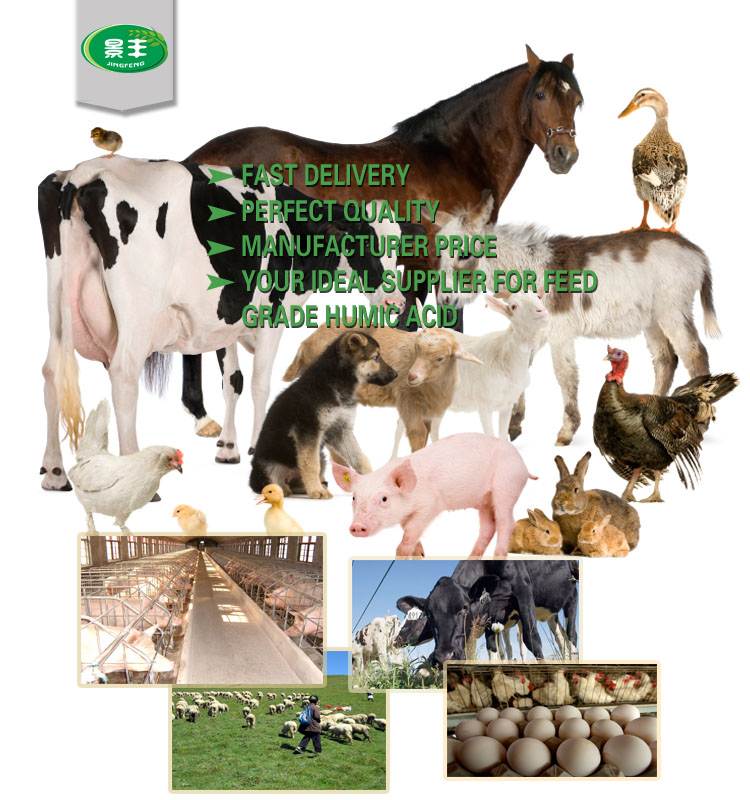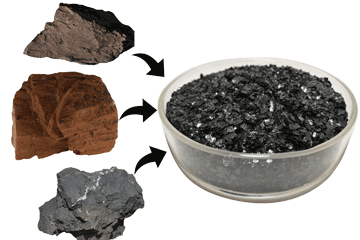Most of the humic acid products used in animal feed is sodium humate. Sodium humate is actually the product of the reaction between humic acid and sodium hydroxide. High-quality sodium humate is jet-black, amorphous particles with beautiful luster.
Sodium humate used in feed is non-toxic, odorless, non-corrosive, and easily soluble in water. It is a kind of macromolecular organic weak sodium salt with multiple functions, which is chemically refined from high-quality, low-calcium and low-magnesium weathered coal containing natural humic acid. Its structure is relatively complicated.
It is known that the humic acid molecule contains benzene ring, fused ring and certain heterocyclic rings. The aromatic rings are connected by bridge bonds. There are various active functional groups on the aromatic ring, mainly carboxyl and phenolic groups , Hydroxyl, methoxy, quinone etc. It is a multifunctional polymer compound with a large internal surface area and strong adsorption, exchange, complexation and chelation capabilities. Its appearance is brown or black, and it is generally considered to be a complex mixture of uneven molecular weight, an amorphous polyelectrolyte.

The use of humic acid in animal feed
The effect of adding sodium humate to animal feed is to promote the activation and absorption of feed ingredients, antibacterial, anti-inflammatory and antiviral effects, enhance humoral immunity, and regulate animal sleepiness caused by endocrine. In addition, sodium humate also promotes the healing of animal wounds.
In daily breeding, sodium humate is the most widely used feed for pigs and chickens. Especially in summer, the drinking water of chickens and pigs will increase greatly, resulting in thin stools and even indigestion and intestinal inflammation. Sodium humate has astringent and antidiarrheal effect, which can prevent the occurrence of these diseases.




